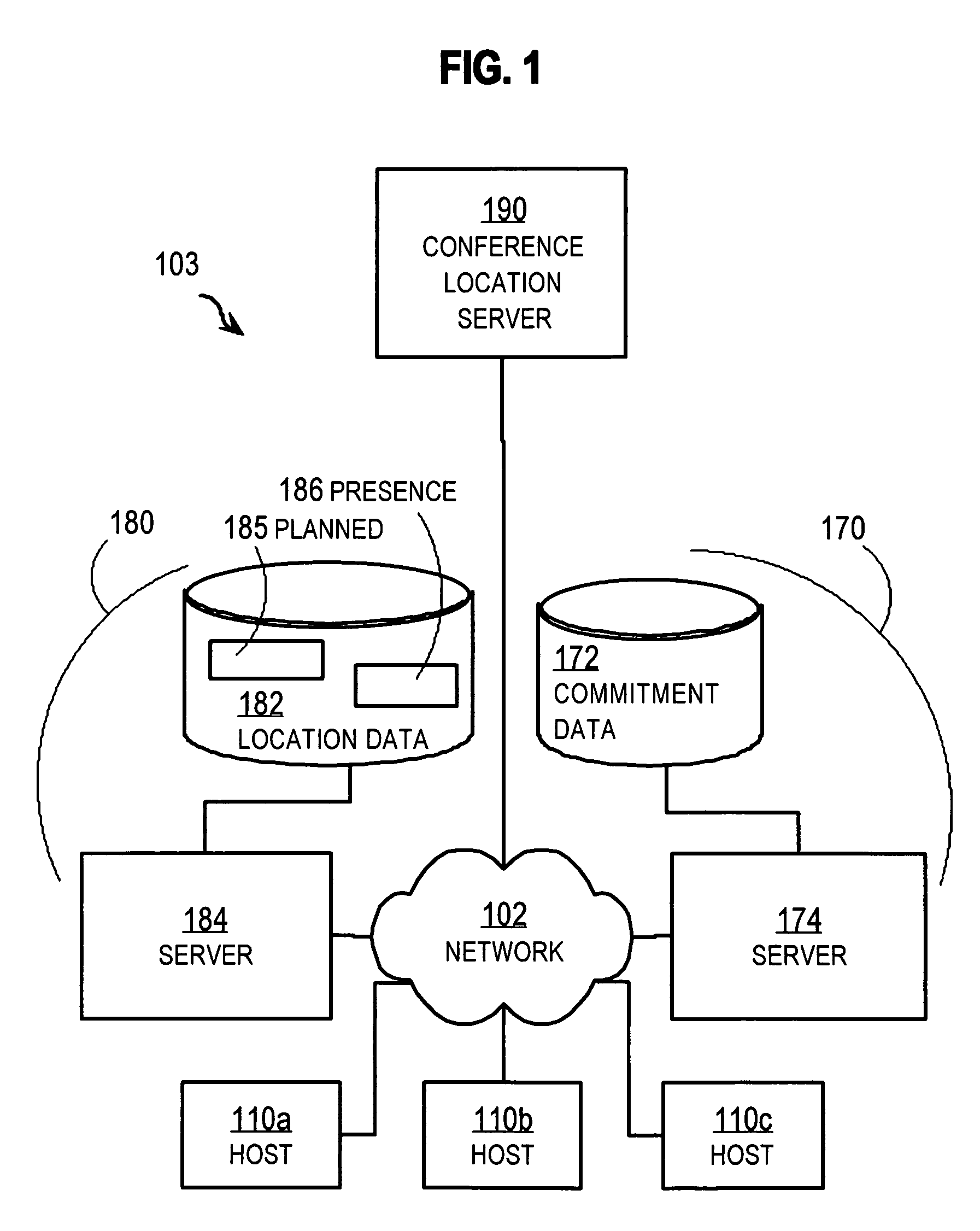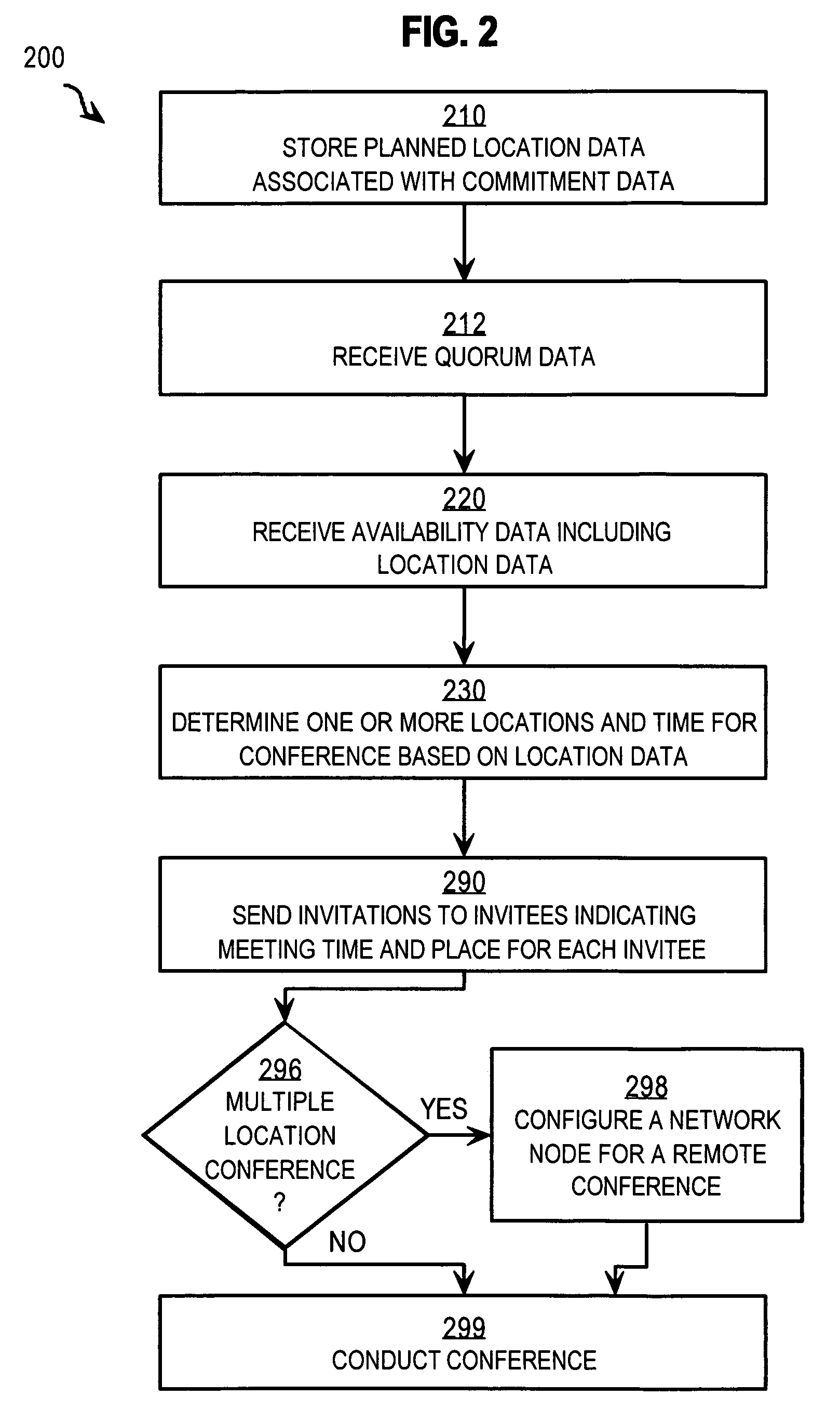Techniques for planning a conference using location data
a technology of location data and conference, applied in the field of location data planning techniques, can solve the problems of inconvenient use of the first proposed time, and the inability to meet the needs of the conference,
- Summary
- Abstract
- Description
- Claims
- Application Information
AI Technical Summary
Benefits of technology
Problems solved by technology
Method used
Image
Examples
example embodiment
3. Example Embodiment
[0048]To illustrate a method according to the present invention, an example embodiment is described. FIG. 2 is a flow diagram that illustrates a method 200 for scheduling a conference, according to an embodiment. Although steps are indicated in a particular order in FIG. 2, in other embodiments, the steps may be performed in a different order or overlapping in time. For example steps 210 through 220 may be performed in any order or may overlap in time. In addition, in some embodiments one or more steps may be omitted.
[0049]In step 210, planned location data is stored in association with commitment data. For example, a calendar database for scheduling meetings is modified to use data structures with a data field for storing a location for the meeting. In some embodiments, a database of videoconference room locations is maintained in association with scheduled uses of the rooms. In some embodiments, data that indicates a role played by the person during the commit...
example conferences
4. Example Conferences
4.1 Immediate Conference
[0088]In some embodiments, the system 103 and method 200 are used to determine where to hold a nearly immediate conference, sometimes called an “ad-hoc” conference, e.g., a conference sometime during the same day or during the next predetermined number of hours, e.g., 36 hours. An ad-hoc conference can be organized using presence data as described above for the example of persons A, B, and C.
[0089]In this example, an organizer determines to hold an ad-hoc conference later the same day. For purposes of illustration, it is assumed that the organizer determines that a quorum is made up of one person from each of three representative groups having five members, four members and seven members, respectively. Using the approach of Ethier, the system 103 determines that there are 5*4*7=140 combinations of three persons that satisfy the quorum, including the combination made up of person A from the first representative group, person B from the se...
PUM
 Login to View More
Login to View More Abstract
Description
Claims
Application Information
 Login to View More
Login to View More - R&D
- Intellectual Property
- Life Sciences
- Materials
- Tech Scout
- Unparalleled Data Quality
- Higher Quality Content
- 60% Fewer Hallucinations
Browse by: Latest US Patents, China's latest patents, Technical Efficacy Thesaurus, Application Domain, Technology Topic, Popular Technical Reports.
© 2025 PatSnap. All rights reserved.Legal|Privacy policy|Modern Slavery Act Transparency Statement|Sitemap|About US| Contact US: help@patsnap.com



